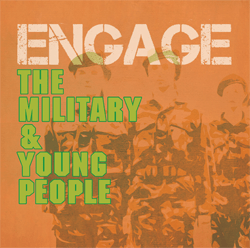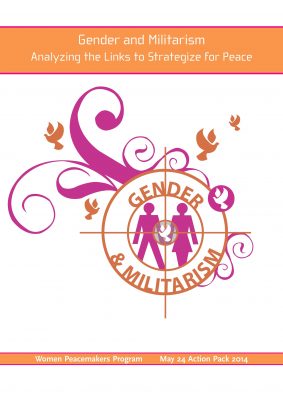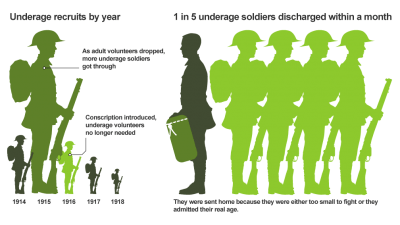Found 435 Results
Page 22 of 32
Armed Forces Day Kids with guns controversy at family celebration for British troops
30/06/2014
THERE are hook the duck stalls, fairground rides and countless ice-cream vans. But these are not the most popular attractions with the thousands of small children who descended on Stirling yesterday for Armed Forces Day. They seemed to prefer handling the high-velocity sniper rifle, getting to grips with an 81mm mortar or staring down the sights of a Starstreak II missile launcher, with its operator on hand to boast of its “multi-target capability” and 7km range.
War and peace
28/06/2014
Letter to The Times (see all signatories below)
On this day 100 years ago, Archduke Ferdinand of Austria and his wife were assassinated in Sarajevo in an action that led to the First World War. Unchecked militarism in Europe was also a major factor.
Today is also Armed Forces Day, one of the clearest indications of the re-militarisation of British society. Established in 2009 to increase public support for the forces, there are over 200 public events, many billed as ‘family fun days’. This week also saw Uniform to Work Day promoting the reserve forces and ‘Camo Day’ in schools.
Quaker report opposes increasing militarisation
“The stirring music, smart uniforms and synchronised marching that characterise Armed Forces Day are a glossy front behind which sits a deliberate strategy to manipulate the public,”
£1m for school cadets
Bursary scheme will allocate money paid in fines by British banks caught up in the Libor rate-fixing scandal to state schools to help them offer thousands more children the chance to join military cadet forces.
Army training scheme for long-term unemployed may be extended
26/06/2014
Scheme piloted in Telford and Stoke can raise awareness of army reserve and make people more employable, says officer
Engage: the Military and Young People – discussion points
24/06/2014

Why does the UK military have a ‘youth engagement’ policy and why is the UK government promoting ‘military ethos’ within education? What is the impact of military activities taking place in schools? ForcesWatch and Headliners worked with a group of young people in London to produce this short film which explores these questions. These discussion points can be used in education and youth groups.
Gender & Militarism: Analyzing the Links to Strategize for Peace
17/06/2014

Gender and Militarism: Analyzing the Links to Strategize for Peace, published by the Women Peacemaker Programme in 2014, is a resource with contributions from many individuals and organisations, including some of the foremost researchers in the area.
How did Britain let 250,000 underage soldiers fight in WW1?
28/05/2014

A BBC resource. Includes a final section on ‘could this happen today’?
At the outbreak of war in 1914, the British Army had 700,000 available men. Germany’s wartime army was over 3.7 million. When a campaign for volunteers was launched, thousands answered the call to fight. Among them were 250,000 boys and young men under the age of 19, the legal limit for armed service overseas.
Peace Education Network
27/05/2014

The Peace Education Network is a national UK network that brings together people and organisations committed to education for peace.
Teach Peace pack

Teach Peace, a new resource from the Peace Education Network, is a set of eight assemblies, follow-up activities, resources, prayers and reflections on peace for primary schools.
From the UN peace day, 21 September, to the International Day for Children as Victims of War, 4 June, the school year is ?lled with opportunities to use the assemblies and activities in Teach Peace. This resource will help to ensure peace is a key theme in our children’s education and help you to celebrate peace and the peacemakers in your school.
The entire resource is free to download below. Hard copies of Teach Peace are available from the Peace Education Network for £5. Also available in Welsh.
Questioning military academies and free schools
20/05/2014
This article explains what we mean by ‘military academies’ and ‘military free schools’, and explores the concerns that they raise: the lack of evidence that they will raise attainment; that they can employ unqualified teachers; their limited accountability to the local community; the fact that they can set their own curriculum. Crucially, there are various agendas behind military academies and free schools, including providing employment for the growing number of veterans, and encouraging pupils to join the armed forces after they leave school. There is also unease about what military-style discipline would look like in a school environment.
Drone Wars: Pilots reveal debilitating stress beyond virtual battlefield
13/05/2014
“To extinguish a person’s life is a very personal thing. While physically we don’t experience the five senses when we engage a target — unlike [how] an infantryman might — in my experience, the emotional impact on the operator is equal.”
Arms and the Woman: Militarizing Gender Wars
09/05/2014
You know the British Army is experiencing a crisis in recruitment when they start to make noises about ending the ban on women in combat roles.
Page 22 of 32
